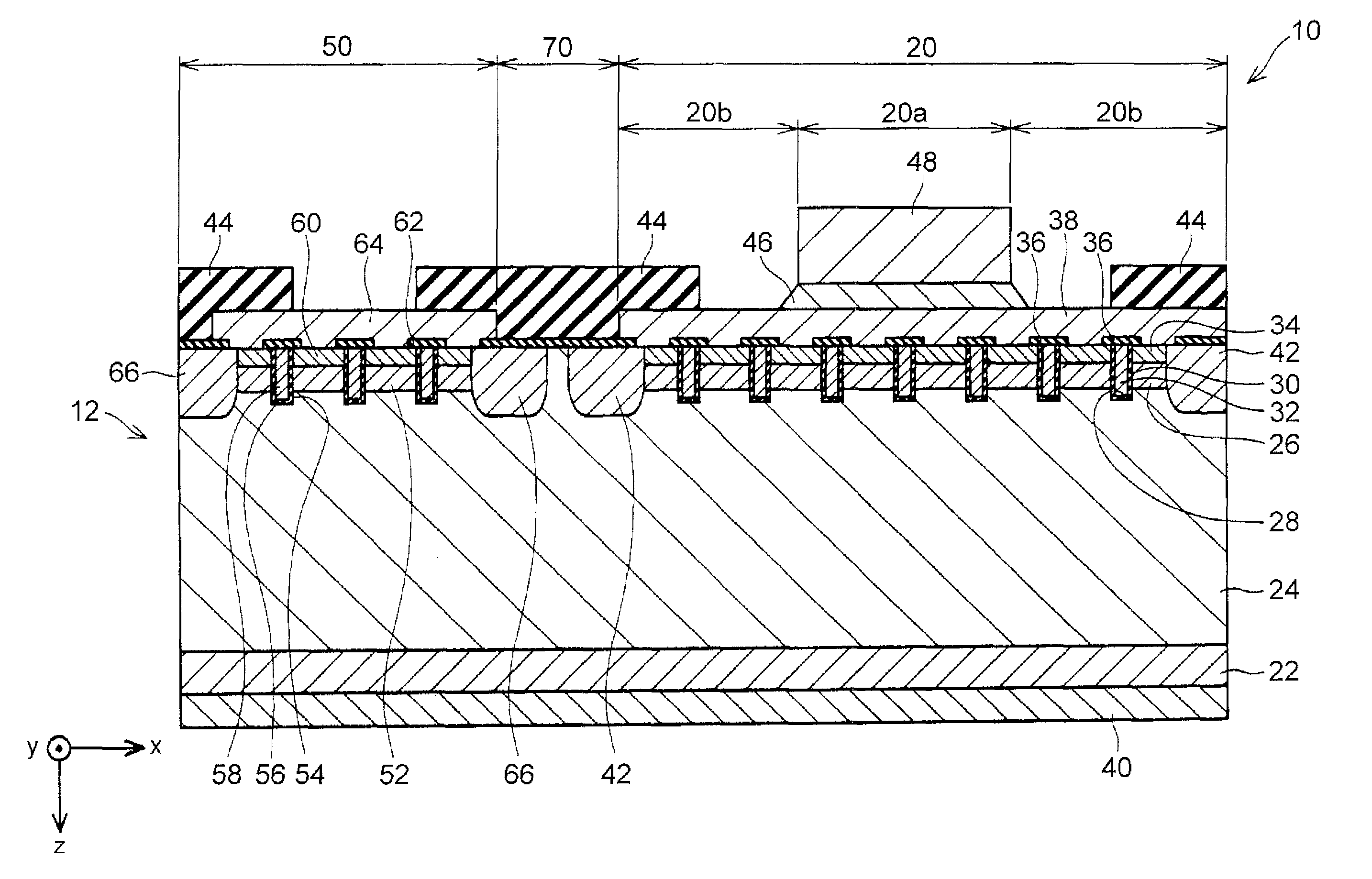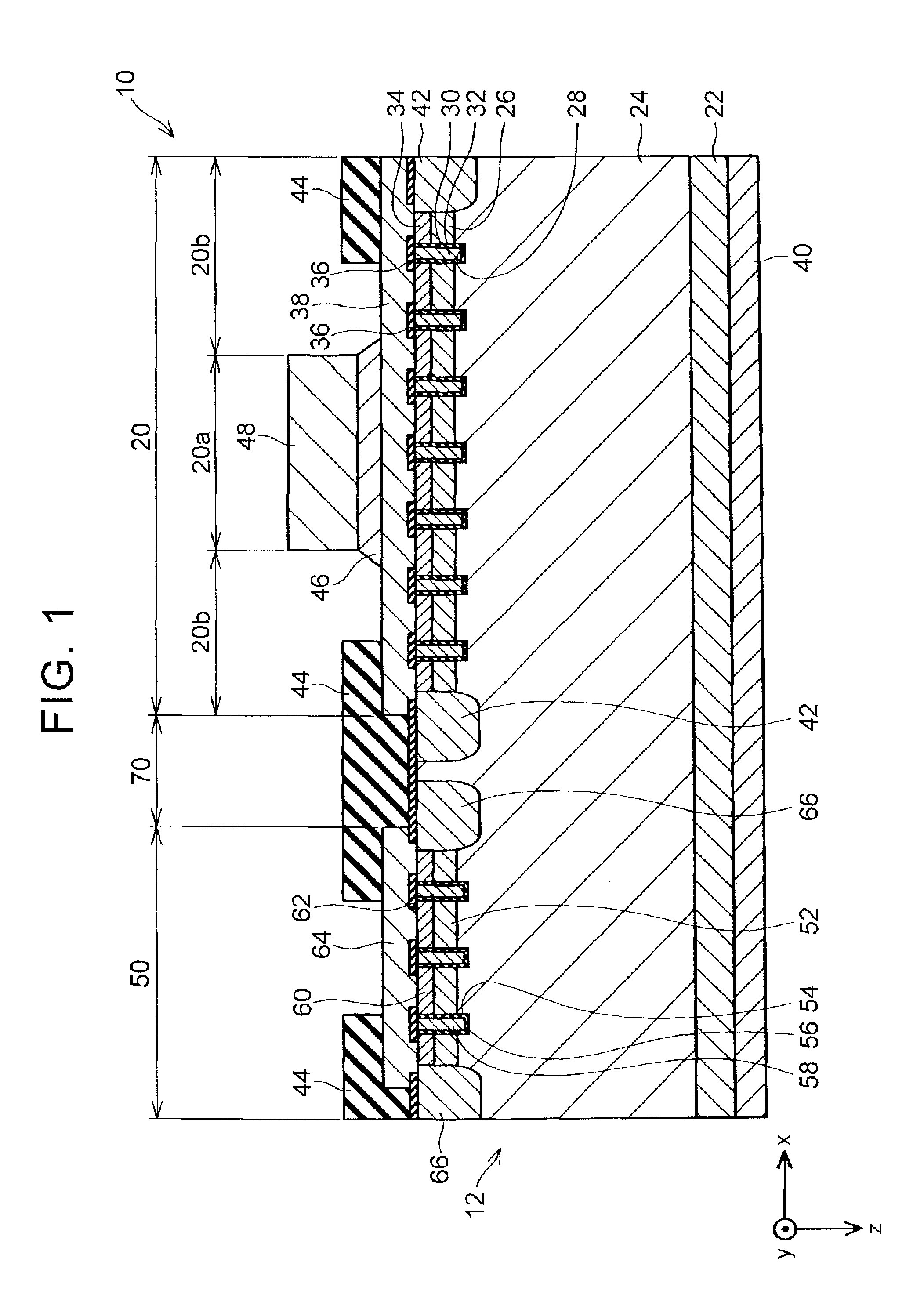Semiconductor device
a technology of semiconductor devices and semiconductors, applied in semiconductor devices, semiconductor/solid-state device details, electrical apparatus, etc., can solve the problems of excessive current density and decrease of withstanding voltage of semiconductor devices, and achieve the effects of reducing short-circuit energy density, reducing temperature increase of semiconductor devices, and improving short-circuit capacity
- Summary
- Abstract
- Description
- Claims
- Application Information
AI Technical Summary
Benefits of technology
Problems solved by technology
Method used
Image
Examples
Embodiment Construction
[0018]In a semiconductor device described in the present specification, a first-conductivity impurity concentration of a first semiconductor layer in a first region may be equal to a first-conductivity impurity concentration of a first semiconductor layer in a second region. When the semiconductor substrate is viewed in a plane manner, a value obtained by dividing an area of channel parts formed in the first region by an area of the first region may be larger than a value obtained by dividing an area of channel parts formed in the second region by an area of the second region. According to such a configuration, without causing the impurity concentration of the first semiconductor layer in the first region to differ from that in the second region, it is possible to lower a short-circuit energy density of the second region than a short-circuit energy density of the first region. Accordingly, it is possible to form the first semiconductor layer of the first region and the first semicon...
PUM
 Login to View More
Login to View More Abstract
Description
Claims
Application Information
 Login to View More
Login to View More - R&D
- Intellectual Property
- Life Sciences
- Materials
- Tech Scout
- Unparalleled Data Quality
- Higher Quality Content
- 60% Fewer Hallucinations
Browse by: Latest US Patents, China's latest patents, Technical Efficacy Thesaurus, Application Domain, Technology Topic, Popular Technical Reports.
© 2025 PatSnap. All rights reserved.Legal|Privacy policy|Modern Slavery Act Transparency Statement|Sitemap|About US| Contact US: help@patsnap.com



